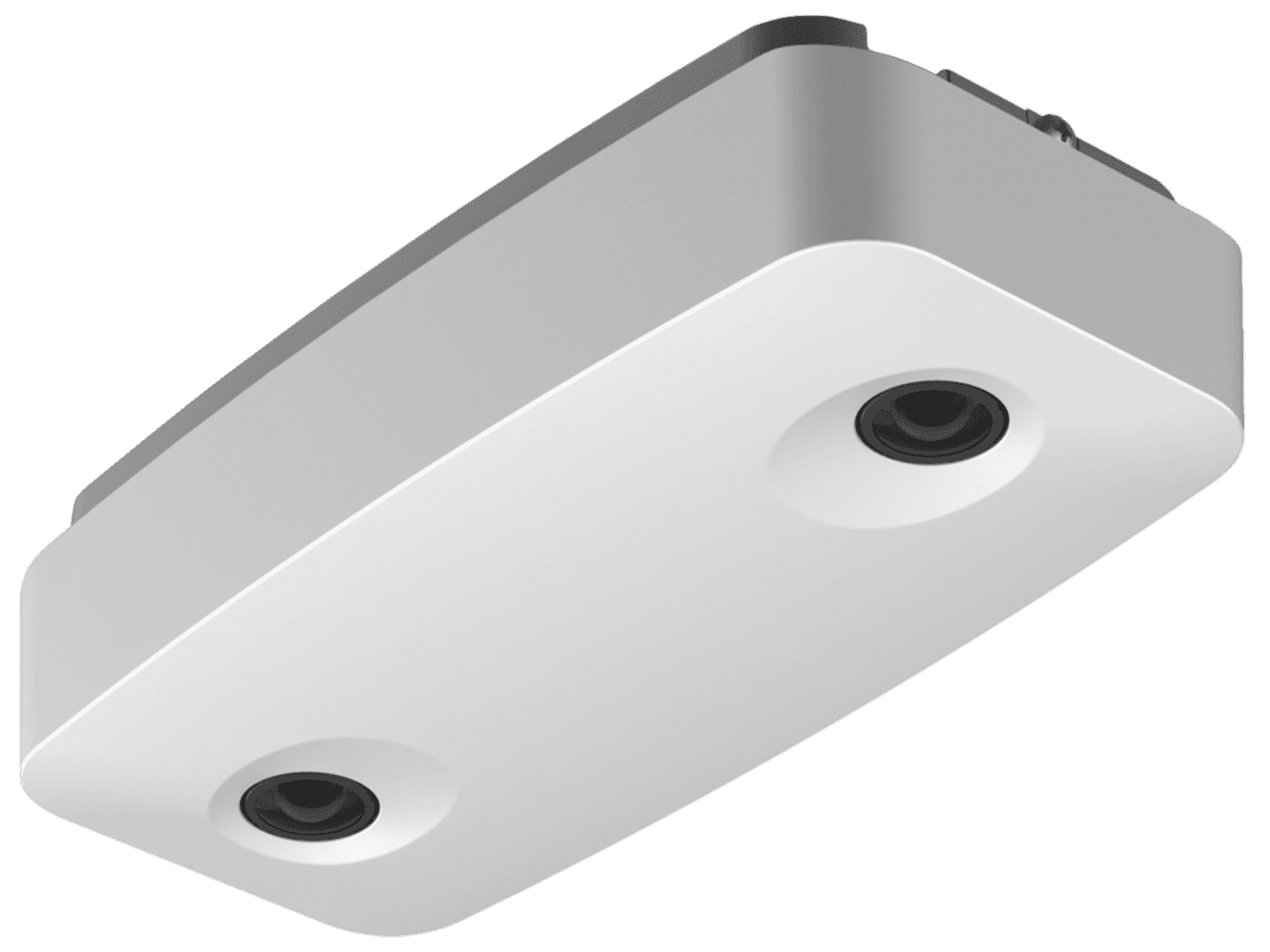5 Key Takeaways From The 2024 NRF Big Show

On this page
Retail's Big Show, another edition of which has recently taken place, is a major event that brings together groundbreaking technology, retail thought leaders, and progressive strategies aimed at propelling retail into the future. With so much uncertainty in the industry, retailers have had to be adaptable and proactive, which is why the show featured future-proof solutions and discussions that can help address today's and tomorrow's challenges. The upside of uncertainty is, of course, opportunity!
We identified five main themes throughout the event, with a specific focus on The Pulse, RetailNext’s latest thought leadership program. These tidbits will be useful for you to keep in mind as you “make it matter” in the year ahead.
READ MORE: 2024 Retail Trends Worth Having On Your Radar
Investment In Malls Is On The Rise
Bil Blane Ingraham, the Executive Vice President of Business Development and Revenue at Centennial, presented his thoughts on the future of malls in the US on day two of the show. He mentioned that to remain relevant, malls must transform themselves into all-inclusive lifestyle centers. The refurbishment of super regional malls is a long-term project that aims to give a fresh lease of life to older infrastructures.
The focus of mall developers and owners is to create immersive spaces that include green areas and a mix of tenants, which could include fitness centers, restaurants, and entertainment facilities. Bil believes that "walkable urban villages" are the future of shopping malls worldwide. To measure the impact of these large, investment-heavy developments, Centennial has partnered with RetailNext, one of its technology partners.
Luxury Retail Remains Resilient
During a keynote discussion, Marc Metrick, CEO of Saks, explored the next iteration of luxury retail. Saks’ operating model changed 3 years ago, and it now operates largely as a standalone e-commerce company. This serves as a complete reinvention of the company’s ways of working. Marc explained that this is an evolution, not an abandonment of the original company, as was first feared. The current focus is meeting the consumers online, where they want to be, especially younger generations of luxury shoppers. “Innovation is what drives this industry,” he noted.
The maturation of the digitally-native customer is a key concern for the brand. Younger consumers are now aging into luxury, financially and professionally. Online discovery and purchasing feel more accessible to emerging luxury consumers. Saks aims to grow with these consumers over time and create ever-increasing lifetime value. Online meets customers earlier in the buying journey. This is a democratization of luxury retail to make it feel more accessible and convenient, despite inflationary pressures. In essence, it de-fangs this heritage luxury retailer. However, “Luxury is always going to need a physical carnation to express what these brands are,” says Marc.
READ MORE: Understanding ‘Hyperphysical’ Luxury Retail
DTC Brands Must Embrace Physical Stores
By 2024, one thing has been made clear: DTC brands cannot scale profitably without brick-and-mortar. An example of a DTC brand that’s embraced physical retail for the better is UNTUCKit. UNTUCKit is a smart-casual apparel brand that started as an online store in 2010. In 2015, they began to expand to physical stores due to customer demand. They now have over 80 stores in the US, UK, and Canada. Michael A. Saldaña, Senior Retail Operations Manager at UNTUCKit, spoke with Joe Shasteen, Global Manager of Advanced Analytics at RetailNext, to discuss how the brand uses the RetailNext suite to improve its physical stores.

As an online brand, UNTUCKit was already familiar with using data to drive decision-making. However, by using RetailNext in their physical stores, they are able to gather even more data and insights. This qualitative data is just as important as the quantitative data they receive online. Store teams share daily data insights and contextual tidbits (affectionately termed “FUNTUCKit Facts”) to help explain store performance. Overall, UNTUCKit has found great success in using data to improve its physical stores and provide a better shopping experience for its customers across all touchpoints.
Tech Innovation Remains A Key Focus
David Sherwood, CEO of Daniel's Jewelers, joined Jenna Suhl, an Account Director at RetailNext, to discuss how RetailNext has helped this family-run jewelry mainstay stay on top. Now in its third generation, this jewelry retailer has embraced technological innovation to optimize the in-store experience. Agility has been at the heart of their success: during the pandemic, they opted for more data-driven approaches to success measurement.
Benchmarking performance has been crucial for understanding what success looks like. Each store deals with a different set of influences and considerations. For example, if a store sells a Rolex on a day, it may be the best-performing store in the fleet that day; however, this couldn’t be the only measurement of store team performance. Instead, a more nuanced approach was needed. The brand has leveraged these metrics to optimize labor and trading hours, thus boosting the in-store experience.
Similarly, Edward Stack, Ex-CEO and Executive Chairman of DICK’s Sporting Goods, stressed the importance of innovation in his keynote address on day two. His sentiment is that retailers must constantly innovate to stay in step with the industry’s complexity. The only constant is change; technology can support retail businesses through this. From marketing to supply chains, technology is crucial.
Looking Ahead To Supply Chain Transformation
During the first day of the Big Show, Raj Subramaniam, the CEO of FedEx, talked to Sara Eisen about how his company adjusts to the ever-changing business environment from a supply chain perspective. As a global logistics leader, FedEx has had to continuously evolve and innovate to meet the changing demands of consumers. The company is now focused on optimizing the entire supply chain to offer a more seamless online experience for businesses and customers alike.
FedEx had to abandon the old siloed approach to achieve supply chain excellence. The company will now unify demand, conversion, fulfillment, visibility, and returns in one purpose-built platform. This approach has helped FedEx support Nieman Marcus in capturing lost sales and optimizing conversion, for example. By using data to set delivery expectations and automate the returns process, the logistics strategy boosts conversion and loyalty, and reduces cart abandonment.
The pandemic has caused disruptions in the supply chain, but we are slowly returning to pre-pandemic levels and predictions. Retailers worldwide are adapting and growing, and data-driven strategies are the key to maintaining resilience and adaptability.
The 2024 NRF Big Show presented many valuable insights into the future of retail. From investment in malls to the resilience of luxury retail and the importance of physical stores for DTC brands, there are many opportunities for retailers to adapt and thrive in the ever-changing industry. The focus on technology and innovation has been and will continue to be a key factor in success, as businesses strive to optimize the in-store experience and meet customers where they are. By remaining adaptable and proactive, retailers can navigate uncertainty and find new opportunities for growth in 2024 and beyond.
READ MORE: Recognizing The Value Of Shopper Journey Analysis In Stores
About the author:

Ashton Kirsten, Global Brand Manager, RetailNext
Ashton holds a Master's Degree in English and is passionate about physical retail's unbridled potential to excite, entertain, serve, and solve problems for today's shoppers.



